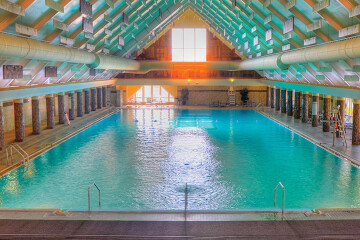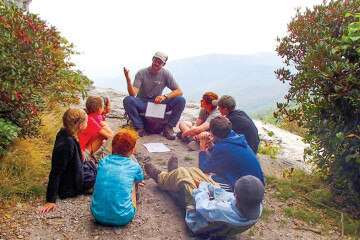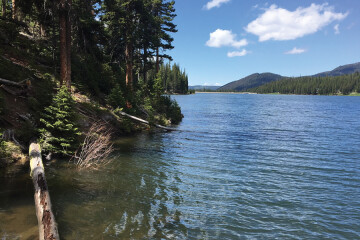Yellowstone National Park: Nature’s Teapot
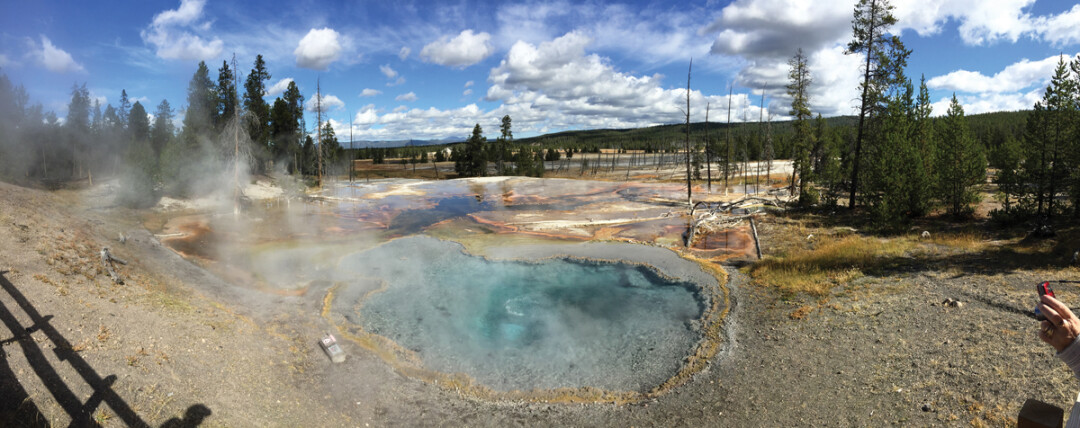
Years ago, my first Science Fair project was entitled “Nature’s Teapot!” I had visited Old Faithful and Yellowstone Park that summer and was now an expert on geysers. There is something amazing about watching, smelling, and visiting the gateway to geothermal hell. Yellowstone National Park is the lid on the teapot.
Bozeman has a front row seat to this adventure. We live in a wonderful and beautiful place. It may be the “Last Best Place” if the Yellowstone Caldera blows. It is more likely for other worldwide volcanoes to erupt long before Yellowstone. We can see the evidence of volcanic activity in Hawaii, Italy, and along the major cracks, or faults, in the Earth’s crust.
Some volcanoes form the classic conical peak. Others, like Yellowstone will form a crater. Yellowstone Lake currently fills the more visible depression or crater. Each eruption creates a bigger crater. Some volcanoes spew lava, gases, or ash. Others create huge pressure waves. The Yellowstone Caldera could do it all, due to the thinness of the Earth’s crust in our region.
The caldera and thin crust of the Earth extend beyond the borders of Yellowstone Park. The same fissures of magma extend to Boulder Hot Springs, Bozeman Hot Springs and all along the Yellowstone River. Bozeman is, at the very least, on the edge of the Teapot’s lid and would end up in the next caldera.
Yellowstone Park is an active caldera style volcano. If it blows, we will never know. The super volcanic explosion would happen in a flash. That’s okay for us unless you prefer living in a planet-killing scenario of volcanic dust, ash, fire, heat, and apocalyptic destruction. This may make an entertaining movie but not a desirable future destination.
Seismic sensors and research have shown that the Yellowstone caldera top is about 44 miles wide. Yellowstone became a park in 1872, but scientists were not aware of the full volcanic issues until the 1960s. If the Yellowstone Caldera erupts, it would be a thousand times worse than Mt. St. Helens in 1980.
An eruption at Yellowstone would be a “Planet Killer.” Several feet of ash across most of the U.S. would just be the beginning. The complex geothermal chemistry is still being understood. All life as we know it would be changed. Knowing when and if the volcano may erupt is a crapshoot. 
There is some new data about the Yellowstone Caldera. It turns out that there are two magma chambers. The first layer is separated from the deeper chamber by a “sill” that is 6 miles deep. The magma chambers are stacked. The upper chamber holds more gas and the lower has more flowing magma. The “sill” is evidence of a volcano that is getting old and tired. It seems to be toward the end of its evolution.
Yellowstone caldera has seen 3 huge eruptions in its history. These eruptions were so large that mountains fell into the caldera. The first evidence of an eruption was 2.1 million years ago. The last eruption was 630,000 years ago. There is currently no evidence that a 4th cataclysmic event is near.
The Yellowstone Caldera may be more likely to take a long nap than an eruption. Because it is an “old” volcano, the recycled, refilled, and remelted material becomes less volatile. The geysers and hot springs in the park seem to also be acting as a pressure relief valve on the Tea Pot lid. The discovery of 2 stacked chambers is evidence of this. The top of the soda can, upper chamber, is more gaseous, and spouts off more easily. The business end of the volcano is deeper, separated, and less active.
Yellowstone is not the only caldera volcano in the U.S. Long Valley Caldera, near Yosemite, California last erupted 700,000 years ago. It also appears to be napping. California has more concerns about earthquakes, but volcanoes are also a reality residents must live with. A volcano could show up anywhere along the San Andreas Fault. This is more likely than a magnitude 6 earthquake. California could literally break off and fall into the Pacific Ocean. Impact around the world would also be an issue.
Plate tectonics shows that the world has changed from Pangea to what we see today. The Earth’s thin surface is covered by a puzzle of floating, and relatively thin plates, or land masses. These plates are floating upon moving rivers of molten lava that is heated by the Earth’s hot core. As the heated magma rises and cools, it falls back into the earth creating currents of molten rock. Lava is this liquid rock once it is exposed to our atmosphere during a volcanic eruption. This change from Pangea to Earth as we know it today took millions of years. Humans often live shorter lives than many trees. Our brief visit to this planet is less than a blink in geological time.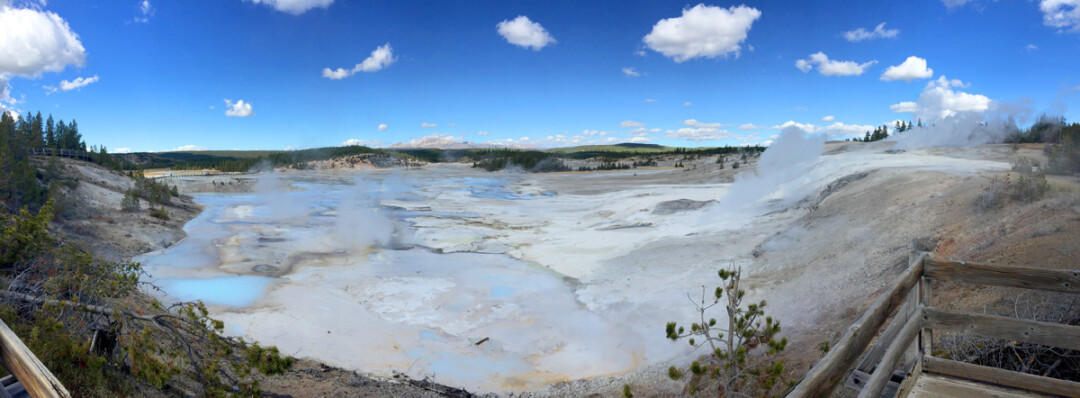
We all worry about climate change. The geothermal activity on our planet is part of this. If every world citizen practiced perfect environment practices, one volcanic eruption would eliminate any benefits, immediately. Like Atlantis sinking into the sea, when it is over, it is over. There will be no “fat ladies to sing.” Politicians certainly do not have a clue, solution, or plan.
Small eruptions and earthquakes are more likely than a cataclysmic, lava-spewing explosion. The recent barrage of local earthquakes focused around Manhattan is evidence of this. Increased and changing geothermal activity in the Park supports this. Steamboat Geyser has been more active this year than in a century. Other geysers, like Old Faithful, seem to be aging and slowing down. Everything is in constant change.
Our world changes. Its climate, magnetic fields, weather, features, and characteristics evolve. Humans do not do well with change. Many take the blame for what is happening. Some of the climate changes are despite us, not because of us. Things could be easier to address if humans were completely responsible for the change. Common sense responsibility for human impacts are important. In the end, Nature is the boss. Our world will continue to change. At some point, life as we know it could end. Hopefully, human existence will immigrate to other worlds.
So, what is the moral of this sad story? Stop wasting energy, time, and stress on things we can’t change. Perhaps we all need to celebrate life harder and better. Treat others, and our planet, with more respect. Spend our time and energy loving each other, our lives and family, and our world. Fewer judgemental, selfish, and hateful people would also be nice. We are all in this together and will go out together. Our existence is so fragile and could change in an instant. It would be nice to know that we lived a happy and unselfish life filled with service, compassion, love, and fellowship here in Bozeman.
Once the teapot is done brewing, nature will serve up her worst. One lump or two?


